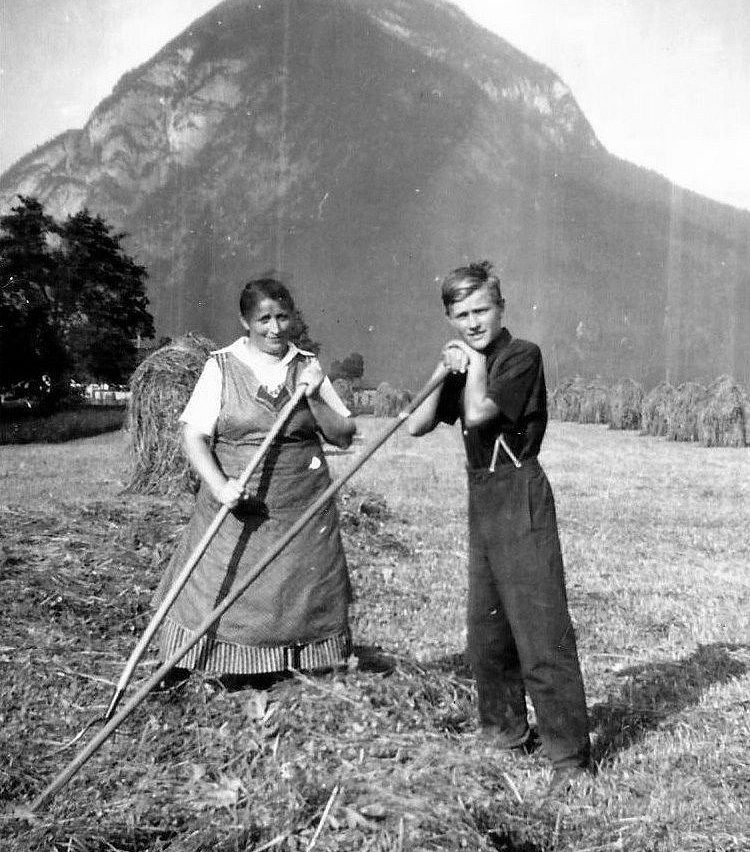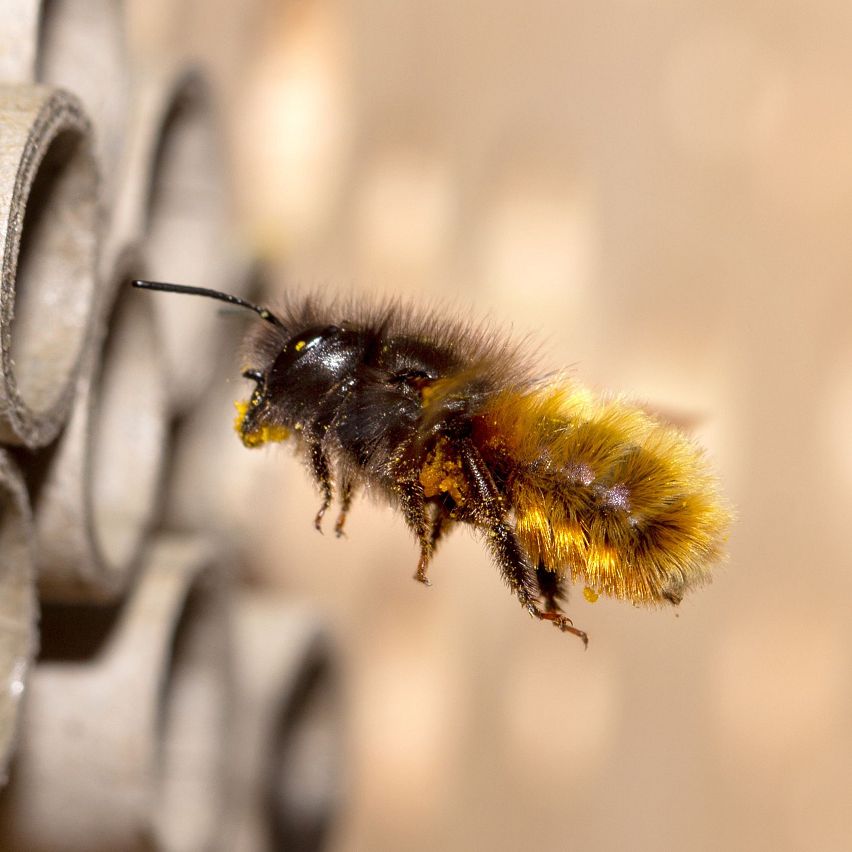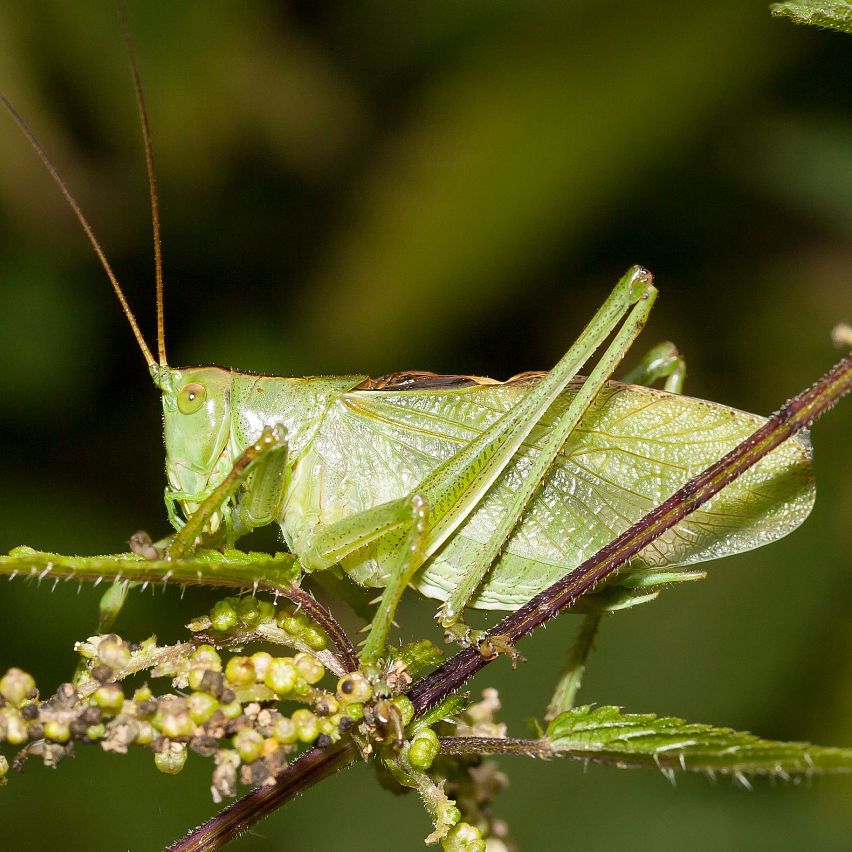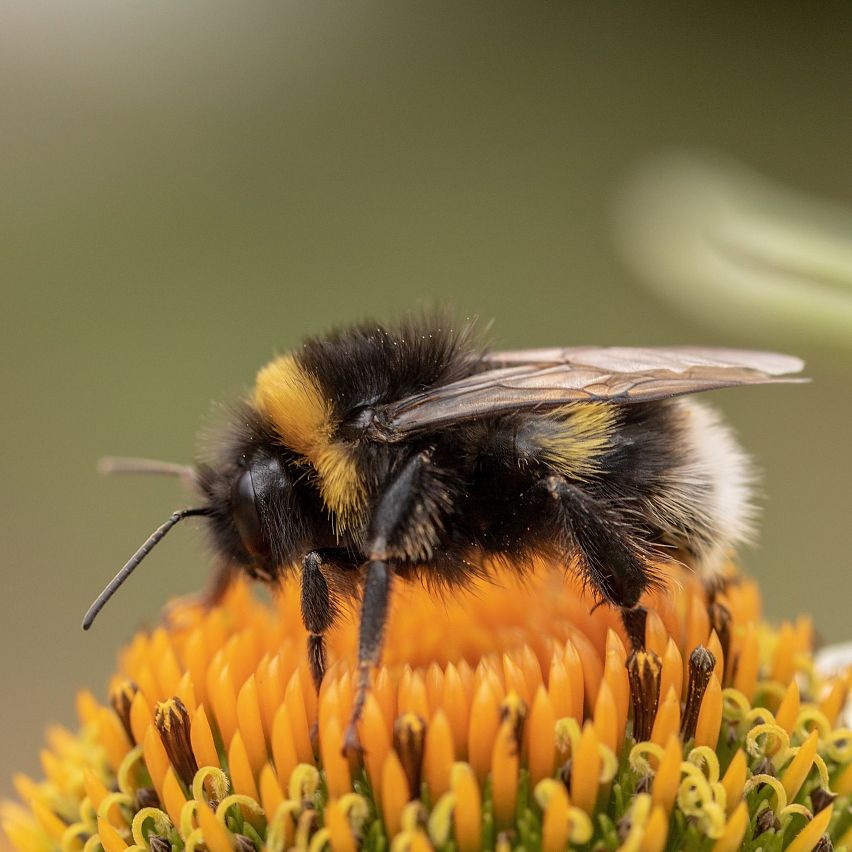Board 2 - Stellach Meadows
The Stellach Meadows Nature Reserve extends beyond the wooden fence. The larch and dry meadows, which are among the most endangered types of vegetation, provide a valuable habitat for a breathtaking diversity of species.

CHANGING ALPINE CULTURAL LANDSCAPES
What Are Mountain Meadows?
Mountain meadows are an important historical landscape form in the North Tyrolean Alps. These are steep grasslands at higher altitudes that are used for grazing cattle or haymaking (hay production). The hay meadows are generally very rich in rare animal and plant species.
The manual labor on the steep areas is often difficult and strenuous, yet some mountain mowing fields are still important grazing and forage areas to this day—and thus also contribute to the preservation of traditional Alpine farming methods.
However, due to economic neglect, many mountain pastures have been increasingly threatened by scrub encroachment and overgrowth in recent decades. Climate change also poses a growing challenge, as the conditions at higher altitudes are also changing significantly as a result. Targeted measures for the protection and maintenance of these areas are therefore necessary to ensure the preservation of mountain meadows.

PROTECTING OUR NATURE
What Are "Endangered Species"?
Most of the animal and plant species presented here on the nature trail are endangered. This means that their populations have declined significantly and/or are threatened with extinction due to factors such as climate change or environmental pollution. The protection and conservation of these species are important for the long-term viability and stability of ecosystems.
The 60-second experiment:
How many different animals and plants can you find in your surrounding area in just 60 seconds?

THE SINGER
Twitching Grasshopper
– Tettigonia cantans –
- Characteristics: Bright green with longish-brown markings on the back, sings well but flies poorly.
- Habitat: Undemanding—dry grassland, wet meadows, sunny roadsides, and cultivated areas.
- Lifestyle: After 6 different larval stages, the adult grasshopper reaches a size of 30 to 35 mm. It feeds on plants and insects.
- Observation Tip: In the summer months, sitting 2 to 5 m high in the bushes, singing—loud and evenly strung-together buzzing sounds—audible up to 50 m away from midday until late at night.
- Observation Period: July to October

The cruel one
Field Cuckoo Bumblebee
– Bombus campestris –
- Characteristics: About 20 mm in size, two yellow stripes on the thorax, abdomen yellow from the fourth dorsal segment onwards.
- Habitat: Forest edges and neighboring meadows, embankments, roadsides, gardens, and parks.
- Way of Life: Like the cuckoo, it lays its eggs in other birds' nests, kills the queen of the host nest, and takes over the well-furnished home.
- Observation Tip: Not picky when choosing flowers, often found on dandelions, thistles, scabious, and knapweeds.
- Observation Period: May to October.
THE SECRET GUARDIANS OF OUR ENVIRONMENT
Wild Bees
As one of the most important pollinators of cultivated and wild plants, wild bees are indispensable for our agriculture and nature. The use of pesticides, nesting and habitat destruction, and the increasing disappearance of flowering meadows are putting wild bees and other insects under increasing pressure. Only species-rich habitats such as forests or meadows with lots of structures such as dead wood, broken edges, piles of stones, and much more can preserve the diversity of wild bees.
Questions & Answers
Can you answer these questions about wild bees?